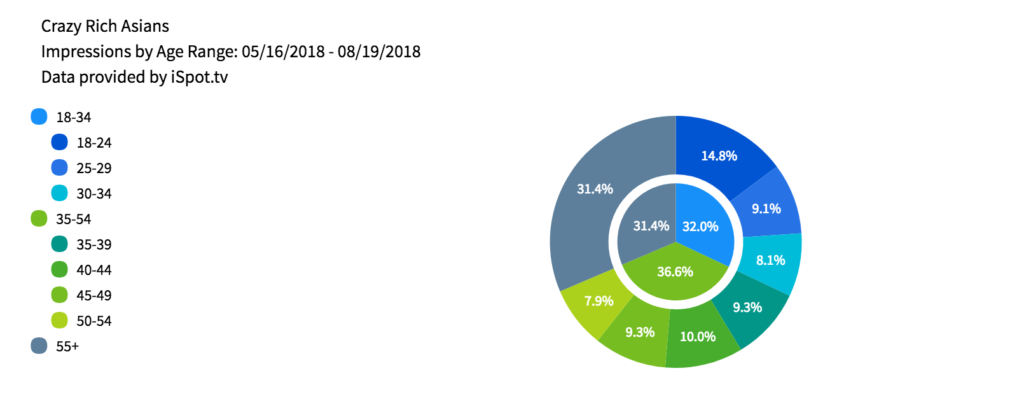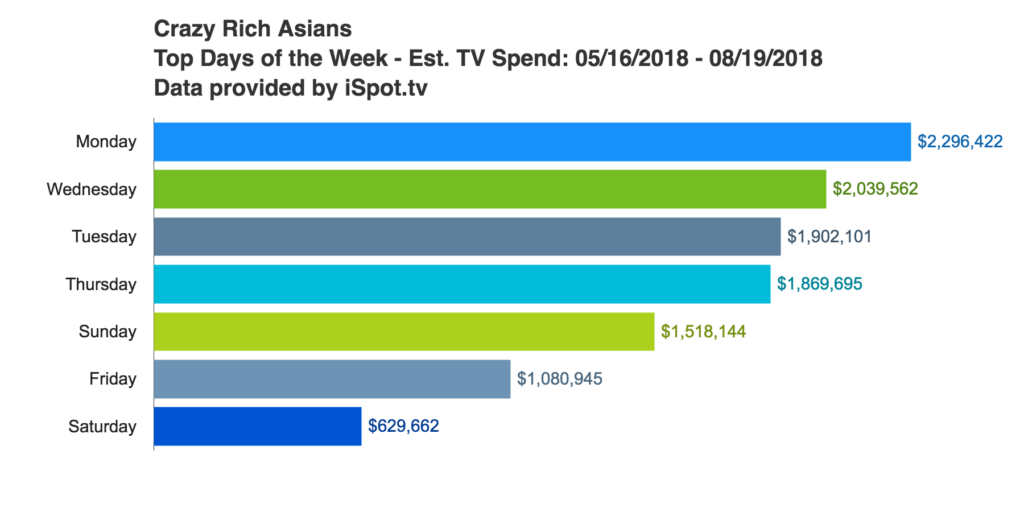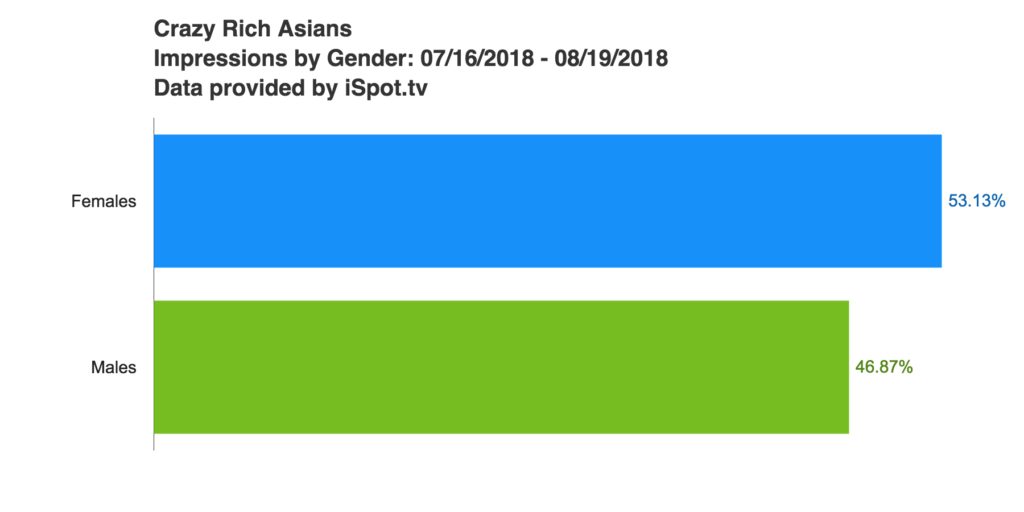(Not So) Crazy Rich Asians TV Marketing
It's a milestone in the movies, and one I think most agree is long overdue. And in a time when people are clearly most excited about giant sharks, super heroes, and epic sci-fi battles, "Crazy Rich Asians" crushed the box office and grabbed a slice of rom-com history. Boom!Was there a secret sauce in their TV spend? I had to look. The answer? Not really! It was smart marketing, though. Using data from iSpot.tv, which measures TV advertising at-scale, here are some reasons why "Crazy Rich Asians" was smart:1. Spend went young(er). 70% of spend was on viewers below the age of 55. That goes against what TV audiences generally look like. Take a look at the full breakdown: 2. It counter programmed. Most big movies load up on Thursdays. Young people are out on Thursdays, not in front of TVs as much (I'm guessing). Mondays are for chilling and regrouping for the younger set. By concentrating spend on the first days of the week instead of later, "Crazy Rich Asians" got more impressions for the dollar and most likely took advantage of those who plan ahead.
2. It counter programmed. Most big movies load up on Thursdays. Young people are out on Thursdays, not in front of TVs as much (I'm guessing). Mondays are for chilling and regrouping for the younger set. By concentrating spend on the first days of the week instead of later, "Crazy Rich Asians" got more impressions for the dollar and most likely took advantage of those who plan ahead. 3. It stuck to primetime. But impressions also didn't come from network primetime alone. In fact, spends on TNT, TBS and Bravo put the heavy lifting for impressions on sitcom re-runs like "Friends" and "The Big Bang Theory," while programs like "The Late Show with Stephen Colbert," "The Bachelorette" and "America's Got Talent" did their job as well - the latter two puling in a majority-female demographic.
3. It stuck to primetime. But impressions also didn't come from network primetime alone. In fact, spends on TNT, TBS and Bravo put the heavy lifting for impressions on sitcom re-runs like "Friends" and "The Big Bang Theory," while programs like "The Late Show with Stephen Colbert," "The Bachelorette" and "America's Got Talent" did their job as well - the latter two puling in a majority-female demographic. All told "Crazy Rich Asians" generated over 850 million TV ad impressions on just over $10 million in spending to date, putting it squarely in the middle of the pack this month. However, a strong social buzz on Saturday and Sunday with 5+ million YouTube views didn't hurt and likely set the film up for a strong second weekend as well. For more data doses, subscribe to our newsletter.
All told "Crazy Rich Asians" generated over 850 million TV ad impressions on just over $10 million in spending to date, putting it squarely in the middle of the pack this month. However, a strong social buzz on Saturday and Sunday with 5+ million YouTube views didn't hurt and likely set the film up for a strong second weekend as well. For more data doses, subscribe to our newsletter.

